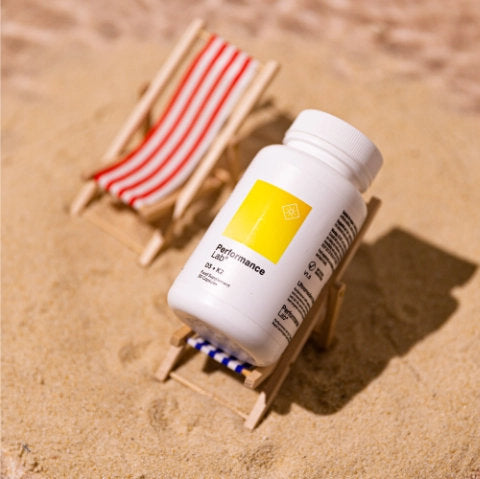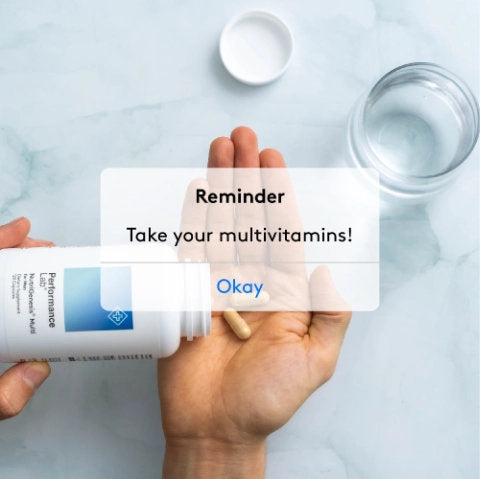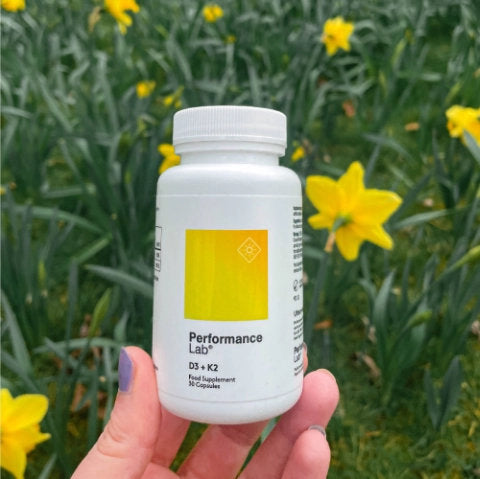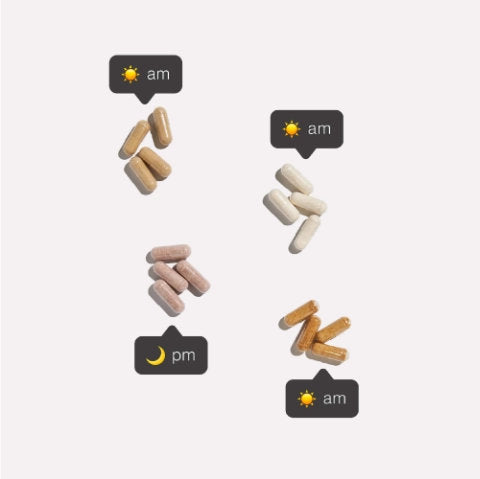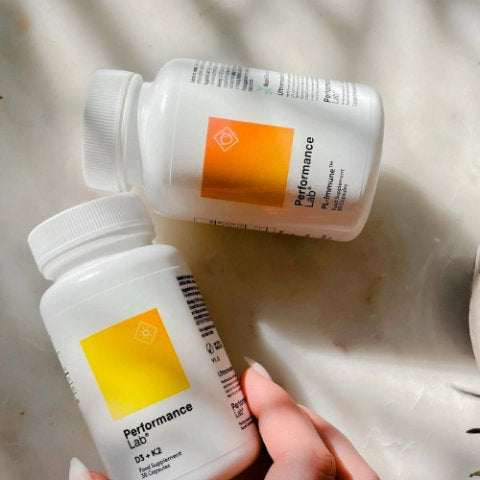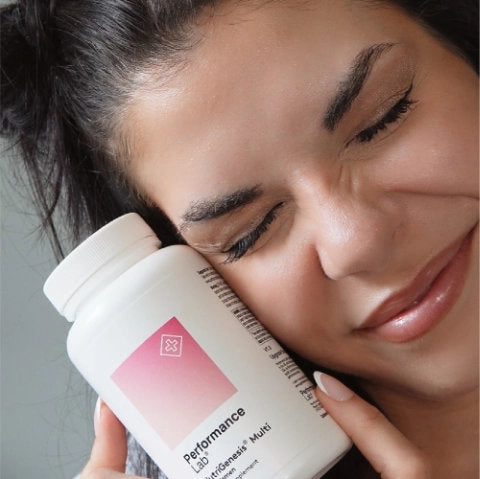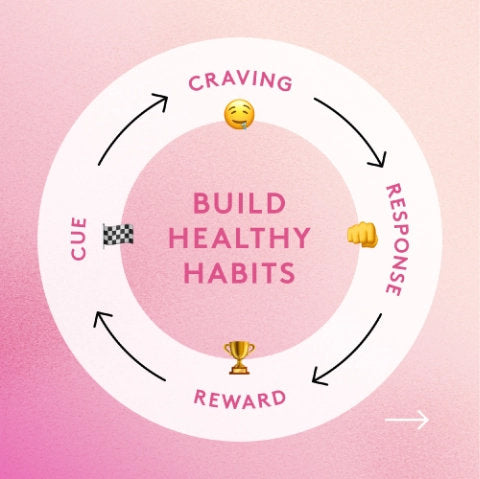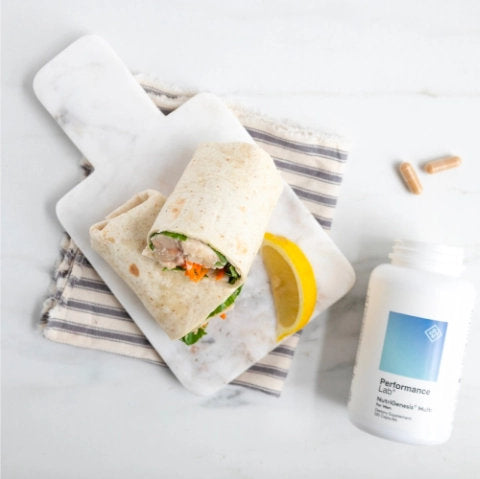How often should you take creatine for the greatest muscle and fitness benefits? Today, we're going on a nutritional investigation to find out. We're going to look at what creatine is, what it's for, how it works, and ultimately solve the case on the best way to take creatine: Dosage, frequency and more. Let's get to it!
Key Takeaways
-
Taking creatine accelerates regeneration of cell energy in muscles during high-intensity exercise – boosting strength, endurance, power, speed and muscle development.
-
“How often do I take creatine?” Take creatine daily. That is because it must be loaded into muscles and maintained to provide performance-enhancing and ergogenic benefits.
-
The “Loading Phase” rapidly saturates muscles with creatine. Take creatine powder in a dose of 20 grams per day, divided into 4 servings of 5 grams each, for about 5-7 days.
-
After loading, shift to the “Maintenance Phase”: 3-5 grams daily. This ongoing phase sustains muscle saturation as long as you are supplementing with creatine.
-
Loading phase brings quicker results, but it’s not necessary. Some people skip loading and take the maintenance dose from the beginning, which still works, just more slowly.
-
Some people get indigestion with creatine supplements. Taking a larger number of smaller-dose servings over the course of the day can help reduce creatine bloats.
-
Consider a pre-workout. Pre-workouts and other supplements for athletes work together with creatine supplementation by boosting gym performance in many more ways.
Creatine Monohydrate Benefits for Athletic Performance

If you’re looking to enhance muscle mass, increase your energy during workouts, and see tangible fitness gains, creatine supplementation could be right for you.
This naturally occurring substance helps energize muscular performance, particularly during intense and short-burst physical activities. Creatine is a well-known ergogenic aid that enhances athletic performance.
However, the benefits you get from creatine supplementation depend a lot on how often you take it.
Benefits associated with creatine supplementation (in conjunction with exercise) may include:
Enhanced Muscle Mass: Creatine causes muscle cells to inflate, which improves athletic performance and increases insulin-like growth factor 1 (IGF-1), a key hormone for muscle growth.(1) Note: This effect can also cause a little body weight gain.
Increased Strength and Power: Numerous studies show that creatine supplementation improves muscular strength and power output during resistance training.(2)
Muscle Recovery: According to a randomized controlled trial review, creatine supplements may help reduce muscle cell damage after exhaustive exercise performance, helping muscle growth and repair. Creatine kinase levels can be an indicator of muscle damage and recovery.(3)
Overall Athletic Enhancement: Creatine can help many aspects of athletic performance, including muscle strength, power, sprinting and endurance – great for a variety of sports.(4)
Sports Nutrition for All Ages: Creatine supplement use is allowed by the National Collegiate Athletic Association (NCAA), and is popular among younger populations: One survey found 28% of college athletes take creatine supplements.(5) Creatine also use holds promise for mature populations, as research suggests it may help with age-related muscle disorders (wasting) and bone health challenges.(6)
Understanding the correct way to take a creatine supplement can bring you the best of these benefits while maintaining your health, safety and digestive comfort.
Let’s get into the how-to, including how often you should take creatine monohydrate, how much creatine powder is best, “loading” and “maintenance” strategies, advantages of strategic creatine supplementation timing and more.
Creatine works best when taken every day. Here's why.
Creatine is made from amino acids and is primarily found in your muscles and brain. About 95% of your body’s creatine is stored in muscles in the form of phosphocreatine, also known as creatine phosphate.
When you supplement with creatine, you load up your muscles with phosphocreatine.
Phosphocreatine then boosts athletic performance by quickly replenishing ATP, the primary energy source used during high-intensity exercise of a short duration, like sprinting or lifting weights. The ergogenic effects of creatine are maximized with daily intake.
The more phosphocreatine you have pre-loaded in your muscles, the more quickly you can produce fresh ATP energy during your workout. Learn more about stim-free energy nutrients.
Creatine’s rapid muscle energy replenishment benefits help athletes maintain higher exercise intensity and greater muscle strength for longer periods of time.
In other words, more reps while lifting weights, extended endurance training, and greater gains in your muscle size and fitness progress overall. Creatine monohydrate benefits may extend to muscle growth and recovery post-workout, too.
Creatine monohydrate’s effectiveness and safety as a sport nutrient is backed by extensive research.
For creatine supplements to enhance exercise performance in the gym, however, creatine must saturate the muscle tissues. But intense exercise burns through muscle creatine stores pretty quickly. The creatine transporter plays a crucial role in the uptake of creatine into muscle cells.
That’s why in order to maintain optimal levels of creatine in their muscles, serious athletes supplement with creatine consistently, every day. They may split doses to make it easier on the stomach and to keep “topping off” creatine stores throughout the day; or take one dose after a training session for potential post-workout advantages.
But most importantly, athletes who want real results will make creatine part of their routine – and hit the right dosage, every day without fail. To understand why consistent creatine supplementation is so important, let’s cover how creatine functions within the muscles.
How creatine works in muscle cells

Creatine's main role is to boost the muscle levels of phosphocreatine (creatine phosphate), which quickly regenerates the ATP (adenosine triphosphate) energy that powers your cells during exercise. But there is one creatine caveat:
Muscles must be fully saturated with phosphocreatine to get performance-enhancing benefits.
Achieving this level of saturation in your muscles depends on taking the right amount of creatine every day, consistently and over time.
However, if someone adopts a haphazard approach to creatine supplementation — taking a little bit here and there, without following a structured dosing schedule — they won't achieve the levels of muscle creatine saturation that is needed to unlock any exercise training benefits.
In other words, if you're supplementing with creatine but not sticking to the recommended dosing schedule, you are likely wasting your time, effort and money.
For those seeking to gain the full range of ergogenic benefits from creatine, it's crucial to follow a disciplined supplementation plan. Without sticking to a plan, achieving and maintaining creatine saturation—and getting the maximum muscle benefits of creatine—will not be possible.
Let's look at some creatine dosages and supplementation schedules now.
Optimal Use: How Often Can You Take Creatine

Creatine monohydrate is taken at different dosages in two distinct phases: loading and maintenance. In the loading phase, higher creatine doses are consumed to rapidly saturate the muscles; followed by a maintenance phase to keep those levels up.
You can skip the loading phase and just do maintenance, but the loading phase saturates muscles with phosphocreatine more quickly. Let's get into these methods.
Creatine loading phase: This short-term creatine supplementation strategy is aimed at quickly maximizing creatine stores in muscles. During the "loading phase," you consume a higher dose of creatine monohydrate—20 grams daily, divided into four 5-gram servings—over a period of 5 to 7 days.
Maintenance phase: Long-term creatine supplementation. After loading, you reduce your intake to the maintenance dose: about 3 to 5 grams of creatine monohydrate daily. You then continue with this daily maintenance dose as long as you are supplementing with creatine. You can skip loading and start with maintenance; it just takes longer to work.
Be aware that your size may change how much creatine you need, too. Some research suggests that larger athletes may need higher intake, up to 10 g per day, to maintain their muscle creatine stores.(7)
Loading Phase vs. Maintenance Phase: Which is Better?
Many athletes prefer taking creatine supplements via the "load then maintain" method because it can speed up the time it takes to load up skeletal muscles and experience creatine's exercise performance benefits.
Taking creatine at high doses, however, can lead to side effects like muscle cramps, stomach upset, and weight gain due to water retention.
Opting for just the maintenance dose from the start can help to reduce side effects associated with those big "loading doses" of creatine. Your skeletal muscles will saturate with phosphocreatine more slowly, but ultimately you get the same athletic performance benefits as creatine loading minus the discomfort. Learn more about creatine digestive side effects
Note: It really doesn't matter much how many doses you split your daily creatine intake into, or what time you take creatine supplements, as long as you reach the total daily dose. What's most important is consistent daily intake to maintain saturated muscle creatine levels.
Easy 28-Day Creatine Plan with Timing Tips

This creatine supplementation plan is designed to boost muscle energy, post-workout recovery, and muscle mass gains over 28 days.
Days 1-7: Creatine Loading Phase - 20 Grams Daily in Split Doses
20 grams is a lot. But you don't have to take it in one serving. If you're wondering, "how often can I take creatine," you should know that taking several smaller servings of creatine powder can actually help to promote better absorption and digestive comfort.
A common approach is to divide the 20-gram dosage into four 5-gram doses taken periodically throughout the day.
This method is often recommended during the creatine loading phase to rapidly saturate the muscles with creatine while minimizing potential digestive issues like bloating or discomfort.
Here’s how you might structure these doses throughout the day:
-
Morning (with breakfast): 5 grams
-
Midday (with lunch): 5 grams
-
Pre-workout: 5 grams (learn about taking creatine and a pre-workout supplement together)
-
Post-workout or with dinner: 5 grams
This schedule ensures that creatine is taken with meals and around exercise, both of which can help with its absorption and effectiveness.
Additionally, spreading the doses throughout the day rather than taking a large amount at once can reduce the risk of digestive side effects and maintain more consistent levels of creatine in your system.
Days 8-28: Creatine Maintenance Phase - 5 g Daily
For the long-term creatine supplementation maintenance phase, the daily intake is typically reduced to around 3 to 5 grams per day. You have a few options for splitting the dose.
Given the smaller amount compared to the loading phase, you might choose to simplify your routine by taking the entire dose at once or still split it to align with key times of day for potential benefits:
Single Dose Strategy for Maintenance
Post-Workout: Take creatine in a 5 gram dose right after your high intensity exercise workout or endurance training for peak effectiveness, especially if it's mixed with a carbohydrate-rich protein shake (plant-based or whey protein supplementation both work), which boosts creatine uptake.
With a Meal: If you're not working out on a particular day or prefer a different timing, taking your creatine with a meal that includes carbohydrates can also enhance its absorption due to the similar reasons mentioned above.
Split Dose Strategy for Maintenance
Although less common with a lower dose, if you experience any stomach discomfort or simply prefer to spread out your intake, you could divide the 5 grams into two doses of 2.5 grams each.
Morning and Evening Creatine Maintenance: You could take 2.5 grams with breakfast and another 2.5 grams with dinner. This method helps maintain a more consistent level of creatine in the blood throughout the day.
Pre- and Post-Workout: Another option might be taking 2.5 grams of creatine monohydrate before training, and another 2.5 grams after your workout.
Both single-dose and split-dose strategies are valid. The choice can depend on your personal preference, how your body reacts to creatine, and your daily routine.
For many, taking the full maintenance dose at one time is convenient, especially when timed with a workout or meal.
Did you know? The International Society of Sports Nutrition on Creatine (ISSN) position statement on optimal creatine levels asserts the most effective plan is to take 5 g of creatine monohydrate (or about 0.3 g/kg body weight) four times daily for 5–7 days. Then, 3-5 g/day to maintain stores of creatine.(8)
What about dietary creatine?

Considering how often to take creatine supplements is half the battle. You can also pay more attention to consuming creatine-rich foods. Dietary creatine intake from foods and taking creatine supplements can help the consistent muscle loading that yields the best exercise performance, muscle mass and body composition results.
Red meats such as beef, pork, and lamb are excellent sources, containing about 1-2 grams of creatine per pound. Fish, particularly herring, salmon, and tuna, also offer a significant amount of creatine, ranging from 1 to 4.5 grams per pound. Poultry like chicken and turkey provides a moderate amount, roughly 0.5 grams per pound.
Incorporating these protein-rich foods into your meals regularly can significantly boost your creatine levels, supporting muscle energy and overall athletic performance.
Since creatine is mostly found in animal products, vegans and vegetarians may consider creatine phosphate supplementation via various proteins and powders. Taking creatine supplement products typically means you get lab-produced nutrients that are vegan friendly.
More Creatine Usage Tips
-
Exercise: Do intense training like strength and resistance exercise that works all major muscle groups. Aim for at least four workout days per week for increased muscle mass.
-
Protein supplementation: Taking creatine supplements and protein at the same time, after your workout, has been shown to provide some synergistic benefits for supporting lean muscle mass.
-
Carbohydrate supplementation: Taking creatine powder with carbohydrate (or carbohydrate and protein) has been suggested to promote more creatine retention in muscle. Learn more about carbohydrates for athletic performance
-
Hydration: Drink lots of water. Creatine supplementation makes you need more water to keep your muscles healthy and avoid cramps.
-
Rest: Taking creatine supplements can enhance athletic performance, but you cannot train non-stop. Take at least three days off each week. Rest days help your muscles grow and recover. Learn about sleep's role in athletic recovery
-
Extra Supplements: Think about a quality pre-workout supplement in addition to taking creatine to get even more from your resistance training and workouts. We recommend one up next.
By sticking to this straightforward creatine supplementation plan, you can enhance athletic performance in the gym, support muscle growth and achieve body composition benefits over time.
Does frequent creatine intake impair kidney function?
Now that we've answered the "how often do I take creatine" question, it may raise another question: Are there any risks to taking creatine supplements every day?
While it is produced by the body naturally and generally regarded as safe, creatine supplementation has also been linked to kidney function concerns, particularly in individuals with pre-existing renal conditions.
Studies have not consistently shown that taking creatine can impair kidney function. However, creatine can lead to an increase in creatinine levels—a waste product measured to evaluate kidney function—which may sometimes be misinterpreted as kidney damage in routine tests. This effect can muddy the waters in terms of kidney health monitoring, particularly in those who take creatine in large amounts.
For individuals with existing kidney issues, there is concern that the extra workload of processing high levels of creatine might be risky. Anyone with renal problems, established kidney disease or other kidney concerns should consult with their doctor before starting creatine supplementation.
Best Pre-Workout to Complement Creatine: Pre Lab Pro®

Creatine is loaded up every day to unlock athletic benefits over time. But what if you want a short-term performance boost? That's where a pre-workout supplement comes in, and we've got one for you right here that pairs especially well with creatine: Pre Lab Pro®.
Pre Lab Pro® is a nootropic-driven pre-workout formula with moderate caffeine plus amino acid sports nutrition that balances energy with calm control. It's the ideal pre-workout for any sport nutrition regimen that includes creatine supplementation.
Ingredients: Red Beetroot Powder; Setria® Performance Blend; Natural Caffeine; L-Theanine; L-Tyrosine; Vitamin D3, Potassium and Iron (all as NutriGenesis®), Himalayan Pink Salt. Delicious natural berry flavor.
Taking creatine supplements and Pre Lab Pro together create a synergistic effect that maximizes workout performance and muscle mass results. Here's how the benefits of Pre Lab Pro dovetail with the benefits of creatine supplementation:
1. Energy Boost: Pre Lab Pro contains natural caffeine and L-theanine, which enhance mental alertness and focus, while creatine provides a direct energy boost to muscle cells by increasing ATP (adenosine triphosphate) availability. This combination ensures both mental sharpness and muscle power are optimized for lifting weights, and works especially well when your stores of creatine are maxed out.
2. Improved Blood Flow: The inclusion of beetroot extract in Pre Lab Pro enhances nitric oxide production in the body, which improves blood flow and oxygen delivery to the muscles. Better blood flow complements creatine's role in increasing phosphocreatine levels, allowing for improved exercise-induced cardiovascular function, better strength training and faster recovery during and after exercise.
3. Muscle Performance: Supplementing with creatine is well-known to boost muscle strength and power, ultimately raising anaerobic working capacity (resistance training potential). When paired with the endurance-boosting effects of Pre Lab Pro, you can perform harder for longer, pushing your limits during resistance and strength training, leading to more effective muscle growth, lean mass and performance gains.
4. Enhanced Recovery: Both supplements support recovery in different ways. Creatine helps replenish ATP stores more efficiently, which is crucial for recovery and lean muscle mass development after resistance training. Meanwhile, the adaptogens and other supportive nutrients in Pre Lab Pro help reduce cortisol levels and oxidative stress, aiding in faster muscle repair and less fatigue.
Together, Pre Lab Pro and creatine supplementation not only enhance each other's performance-enhancing properties but also ensure a well-rounded approach to sports nutrition, making resistance training and endurance exercise more effective for achieving strength and fitness goals.
Conclusion
If you want to take creatine supplements for optimal results, how often you take it matters.
It is critical to focus on taking creatine daily and consistently, at appropriate dosages. Initially, a loading phase of 20 grams per day, split into four 5-gram doses, can quickly saturate the muscles with creatine over 5-7 days. Following this, a maintenance dose of 3-5 grams daily helps sustain creatine levels (more if you are a larger athlete).
In the big picture, frequency of taking creatine monohydrate is less important than meeting your daily dosage goals.
Over time, maintaining the correct daily dose—whether through a loading phase or during regular maintenance—is what truly contributes to achieving and sustaining high creatine levels in your muscles, thereby optimizing the supplement's effectiveness for primarily anaerobic performance (resistance training), but for aerobic performance (cardiovascular exercise) too.
Ultimately, routine is the name of the game -- making creatine supplementation easier to stick to and benefit from over the long term. With these guidelines, you can optimize creatine supplementation benefits for muscle growth, muscle strength, muscle size, physical performance and more.




